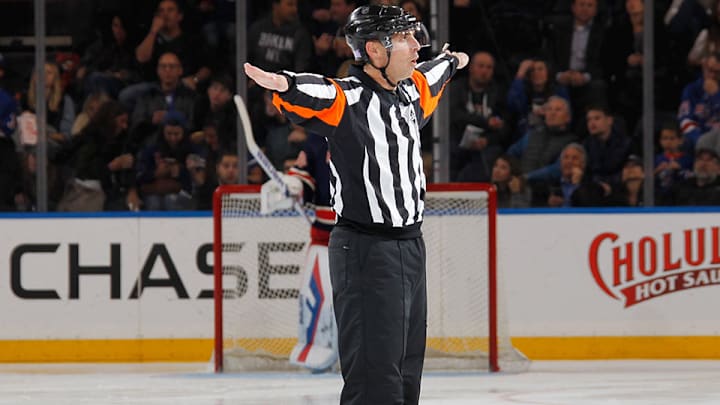USHL’s icing experiment could show NHL the way to boost scoring

Hockey fans may be at odds over how best to address the NHL’s scoring woes, but there’s one thing we all should be able to agree on: Rule changes should always be designed with an eye on enhancing the quality of game play and to promote a greater level of skill.
Simple, right? So maybe before the league pursues any more drastic solutions to its goal drought, it should take another hard look at why it allows a defending team to ice the puck on the penalty kill.
“When you start thinking about the fact that we give an advantage to the penalty-killers in that they’re allowed to ice the puck, you start to wonder,” Maple Leafs President Brendan Shanahan said.“They’ve broken a rule, they’ve gotten a penalty, so now we’re going to let them break this other rule just for those two minutes.”
Roundtable: Did the media treat Patrick Kane fairly?; more topics
There’s always the chance of unintended consequences when you start tinkering with the rules, but the league has already had one glimpse into how eliminating icing on the PK might work out. Prior to last season, the USHL, the nation’s only Tier 1 junior league, experimented with this change during its Fall Classic exhibition series.
Not surprisingly, it worked out pretty well.
“I went back and looked at [power play success rate] success rates from previous preseasons,” said USHL Director of Hockey Operations Adam Micheletti. “Teams were at 11% before. That went up to 22%.”
Granted, it”s a small sample size and an experiment that played out in a developmental league. There’s no guarantee the effect would be anywhere near as dramatic over a longer time frame or if instituted at a higher skill level. Still, that’s the sort of number that should catch the eye of those who are looking to increase scoring in the NHL without taking more drastic steps like increasing the size of the net.
That said, the USHL’s experiment wasn’t aimed at lighting more lamps.
“This wasn’t about increasing scoring,” Micheletti said. “We're happy with where league is at with scoring. This was about exploring ways to showcase our players and their skill.”
And that right there is the real reason why the NHL should give this some serious consideration.
Dumping the puck the length of the ice just to kill time is an anti-skill play. It’s the exact opposite of everything the game should be promoting.
The USHL experiment, on the other hand, rewarded creativity and courage and playmaking.
Longtime Capitals defenseman Mike Green adjusts to life with Red Wings
“It was really exciting to watch,” Micheletti said. “And as we saw more players trying to make plays instead of just icing it, we saw more shorthanded goals scored as well. And since defending teams took more chances, that led to more [power play] goals being scored off the rush as a [defending] forward or two got caught deep trying to score.”
It was also a great promotional tool for the league’s young prospects.
“A lot of NHL scouts and college coaches watched it closely to see which defensemen could find a man [and] move the puck out of the zone under pressure, which forwards had the speed to challenge on the attack [while shorthanded].
“It was a great showcase for their talent.”
If there was one misstep in the original USHL experiment it’s that there was no repercussion for a defending team icing the puck. In fact, they were even allowed to change players on the ice, which they aren’t in standard icing situations. That’s a loophole that NHL coaches would easily exploit. They’d gladly kill momentum, and take a 50/50 chance of retrieving the puck on the ensuing face-off, any time there was too much pressure from the attacking team. And that would slow the pace of the game.
The obvious solution: penalize a player who commits icing on the PK for delay of game, the same as they’re currently docked for sending the puck over the glass in the defensive zone. The risk of going down two men will get players in line in a hurry.
That aspect may or may not be part of any future plans for the USHL. Although the league didn’t repeat the experiment this year—scheduling issues precluded it from staging the Fall Classic again—it’s something it wil likely consider again next fall.
If it does, the NHL should watch closely. This is a change that's all about enhancing and showcasing skill. And if it increase scoring as well, that makes it a no-brainer.
